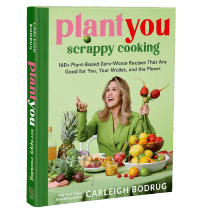How to Regrow Vegetables from Scraps
In this article, we are going to share how to regrow vegetables from scraps. Growing vegetables from scraps in incredibly easy to do, inexpensive and sustainable.
Instead of letting your veggies end up in the compost, take on this at-home activity and start growing your own food!
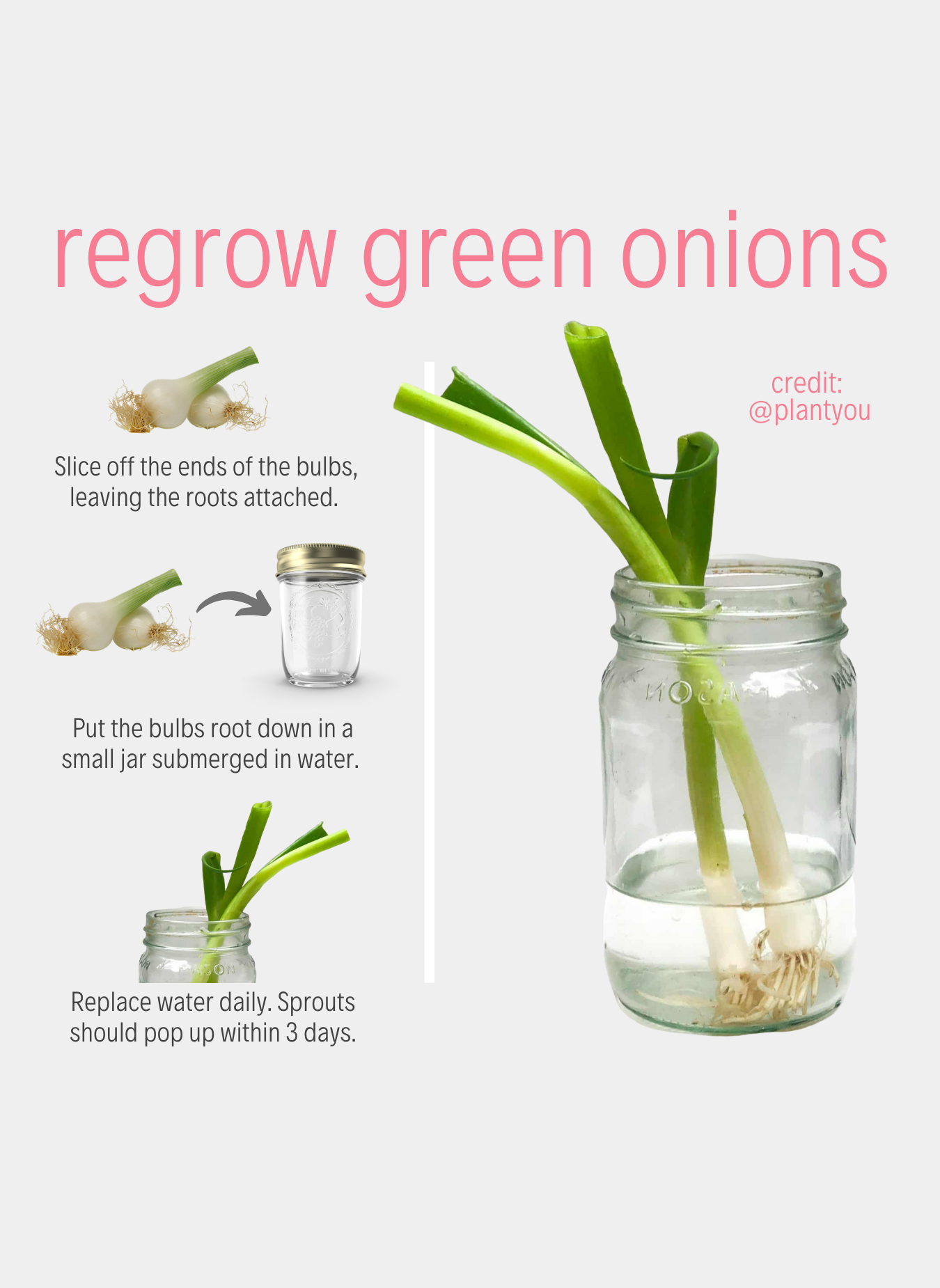
If you’ve been trying to have a zero-waste kitchen, growing your own vegetables from scraps is the best recycling technique. Using leftover veggie scraps and their seeds to regrow your own food will help you create the sustainable plant-based kitchen of your dreams!
To get started, make sure the vegetable scraps you are using are in decent shape. You will quickly find out if they are going to regrow in the first week of this process. Therefore, if you don’t find your veggies are starting to sprout at this point, they are good to be tossed into the compost.
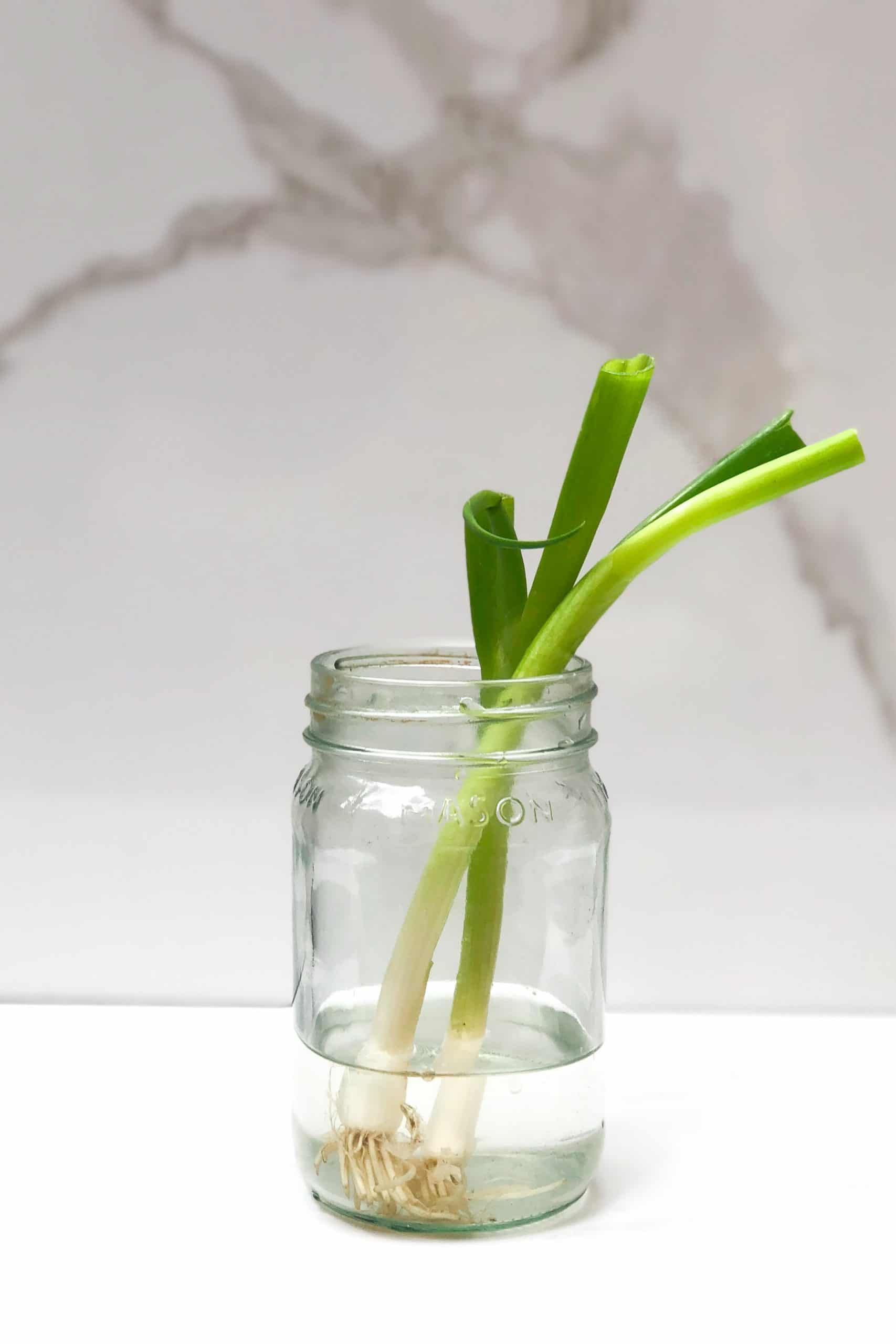
List of Vegetables You Can Regrow from Scraps
Easy To Do:
Green Onion – This is one of the easiest places to start when growing your own veggies from scraps. You may see this one appearing on the internet quite a bit and be thinking that you don’t have time for that! But, mark my words, this is extremely simple to do. Green onions have exposed roots and when in water, will regrow quickly. In a week’s time, you will start seeing your roots growing that green steam back again!
Kale – Submerging the core root of your kale will be the golden ticket to regrowing your kale! This will regrow in approximately 2 weeks, but you will start seeing the roots sooner begin to sprout! Once you see the sprouts, you have the green light.
Leeks – This is also an easy one, similar to the green onion.
Carrots/Beets – leafy tops – When it comes to carrots and beets, you will be regrowing the leafy green tops. This part of these veggies are usually disregarded. If you are on track for creating a sustainable kitchen, you will be wasting less food by using the whole vegetable. These greens are delicious too! You can add them salads, sauteed, sauces and smoothies. They are packed with healthy nutrients and easy to harvest too!
Cabbage – Cabbage will be one that will need to transplant into your garden but can be quickly regrown in water.
Celery / Fennel – These veggies are not quick to grow, but the method is still quite straight forward to doing so. You will get the most use out of these scraps when regrowing!
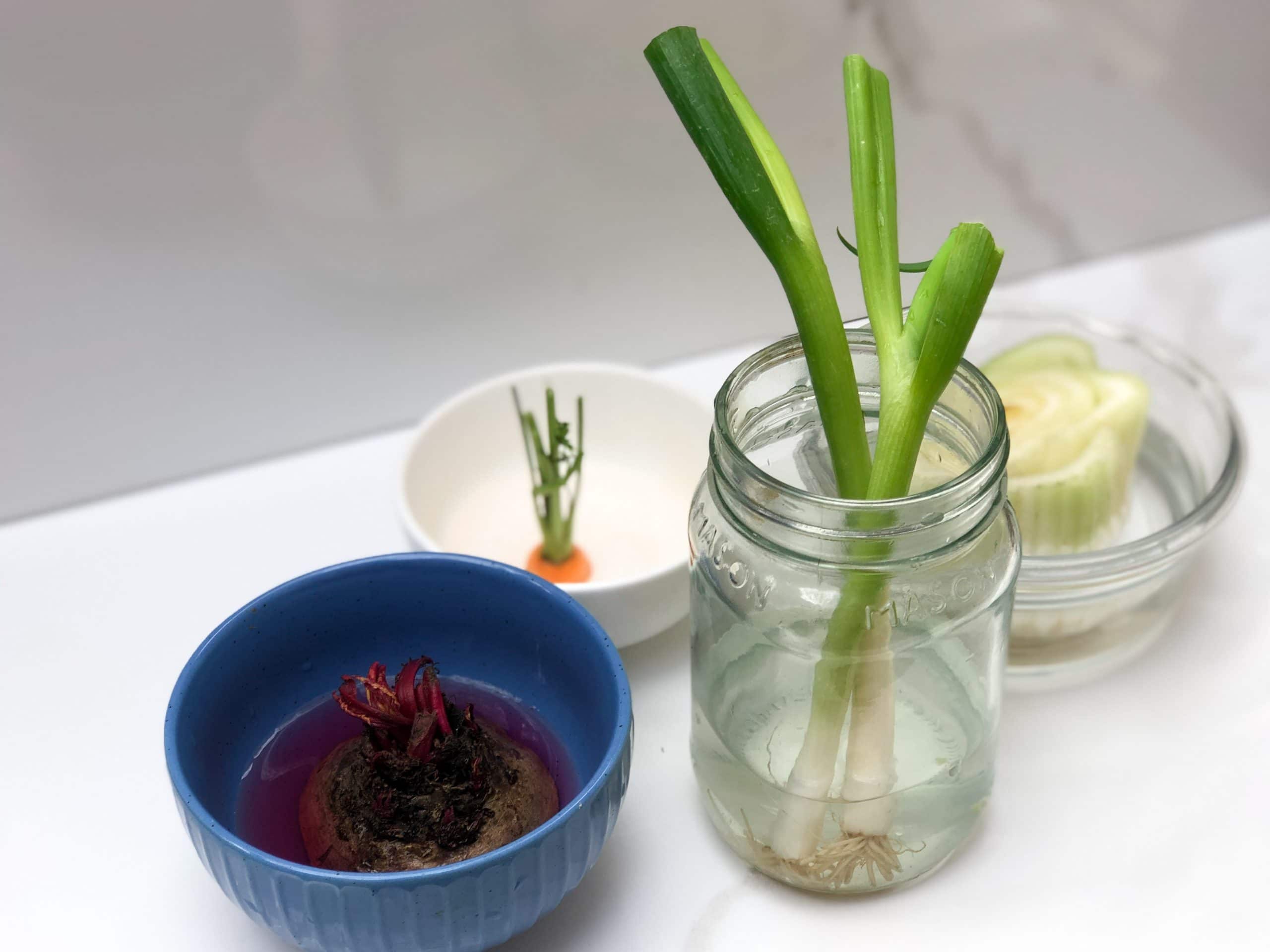
How to Regrow Vegetables from Scraps
Step 1
Cut off the top of the root or bottom of non-root vegetables. This will depend on which vegetable you are regrowing.
Step 2
Place the root cuttings in a small bowl, mason jar, or saucer dish. Anything with a top root place in a small dish.
Step 3
Change the water every day. With every water change, check out the roots for new developments.
Step 4
You will soon see your leafy greens start to regrow or an abundance of roots has developed. Either trim of the leafy greens you desire or transplant this into your garden or pot to grow indoors. Harvest when fully abundant!
Higher Level of Attention Required:
These vegetables below can regrow from scraps but take more time in the process. That is why I didn’t include them in the how-to instruction portion. I wanted to point out these tasty vegetables because they are prevalent in the plant-based kitchen and, if accessible, can be regrown in your home garden. Below I have given a brief outline of how to do this.
Potatoes – Cut your potatoes into halves or pieces with the eyes exposed. Plant directly in your garden bed or in potting soil. They will begin to a sprout in a 1-2 month time. This method will not work for sweet potatoes. If you would like to try out sweet, plant the whole potato and wait for it to grow.
Mushrooms – The difficulty level is high for mushrooms. If you are ambitious, give it a go! Cut off their caps and plant in a pot with the top of the mushroom exposed in the soil. Make sure your soil is nutrient-rich and you are keeping up with care. Here is an amazing and informative article about growing mushrooms.
Garlic – Regrowing garlic has easy instructions but will take time. Take a clove from your bulb and insert it in a pot with the root side down. By spring or summer, you will be able to harvest a whole new bulb to enjoy!
Ginger – Ginger will regrow best when indoors in a warm place since it is tropical. If you notice the root spots of the ginger, submerge in water for the new bud to start growing. Once the bud appears, move it into a pot with fertile soil. After a few weeks past, you will begin to see green shoots emerge from the soil, and you will be able to harvest.
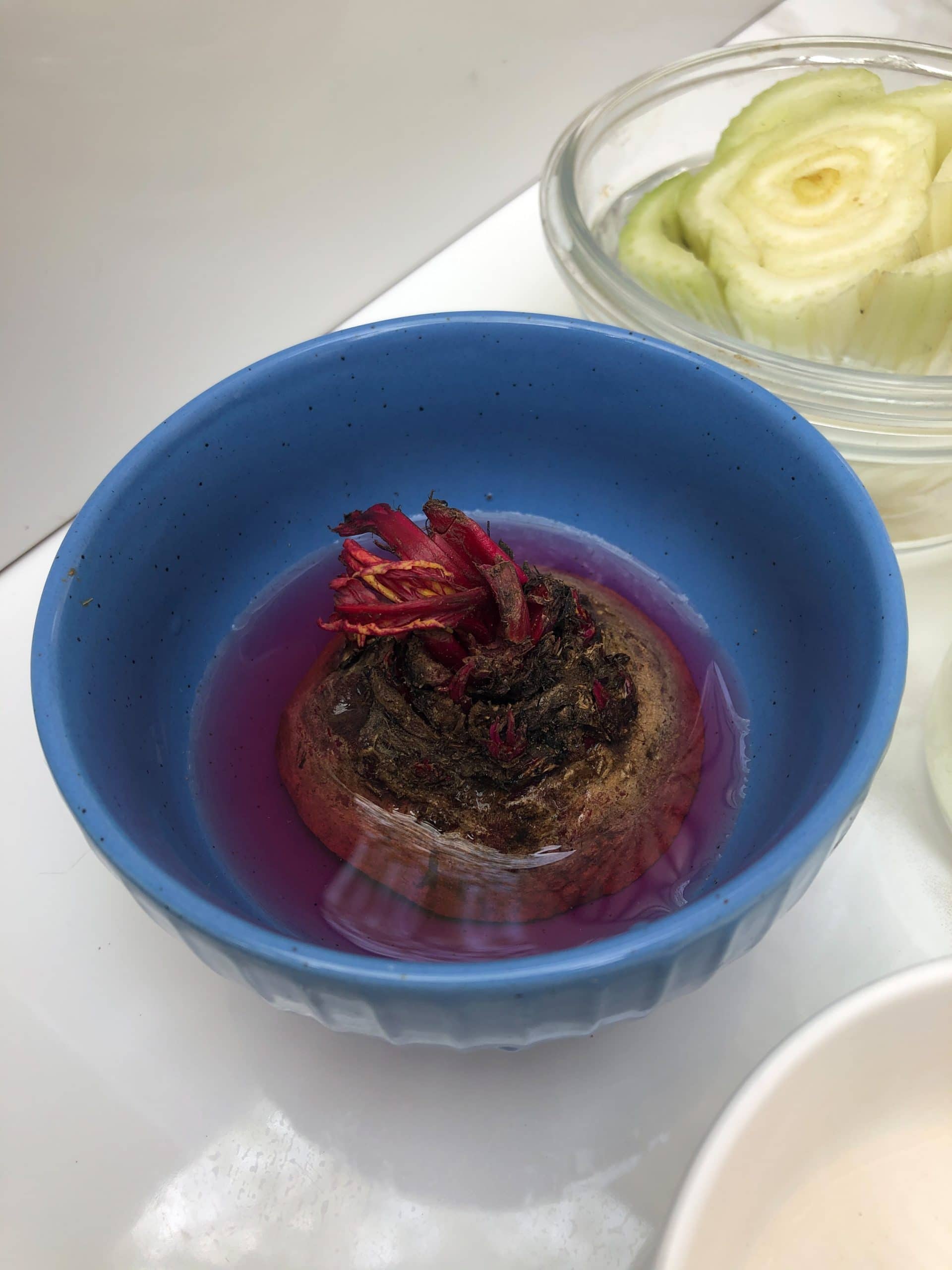
Herbs that grow back in the water:
- Basil
- Mint
- Oregano
- Sage
- Cilantro
- Parsley
Herbs are easily regrown in water! Just make sure you are only submerging the roots in the water and not the leaves.
Regrow vegetables from scrap seeds:
- Peppers
- Cucumbers
- Pumpkins
- Winter Squash
- Tomatoes
Can you think of a better way to use the whole vegetable? Now, that is sustainable! Grow vegetables using the scrap seeds by inserting them into your garden bed. The vegetables that I listed above are some of the easiest.
If you are looking for another fun regrow tutorial check out our article on how to grow your own pineapple at home!
We have an abundance of FREE resources for a plant-based lifestyle check them out in this section of our website.
Since you are regrowing your own vegetables now, we think it the perfect time to get inspired with whole-food plant-based recipes!
The best way to do this is to sign up for the Plant Ahead Program because when you become a member, you will gain access to over 70 curated plant-based meal plans that include 100’s of recipes to pick and choose from. This way, you will be able to start right away, cooking up delicious meals with your home grow vegetables!

